ARANCINO/A AND PAROCHIALISM

Photo Source: Antonino Rampulla
The main Sicilian cities seem ill with a chronic syndrome of superiority compared to the others. Each decant has its oldest and most resounding origins, a greater historical importance and a more authentic Sicilianity. This rivalry translates in most of the cases into a funny folklore.
Browsing the web I came across a series of articles about the
diatribe about the genre of the Arancino : it seems that, at least on the net , both a matter of much debate. At the same time I found myself on the screen the photo of the fashion blogger Chiara Ferragni in order to taste a
arancino in Taormina together with her boyfriend, the famous rapper Fedez. This is an instagram post in which he defines the
arancini one of his favorite dishes. Below this picture, a
string of insults by supporters of the feminine declination of the Sicilian dish and theoretical of the correct way to eat it (from the base and not from the tip). Dear Sicilians, to be honest to me is only to thank the Ferragni, because ultimately indirectly only made
free advertising to our island . But you know, behind the keyboard we are all the executioners who do not forgive one.
But what should be forgiven Ferragni? In Taormina, as in Catania or Messina and, in general, throughout the eastern part of the island, the arancino is male.

In reality,
establishing the genre means attributing authorship , ie exhibiting a new trophy in the broader context of increasing the importance of one's own city and, above all, diminishing the importance of rivals,
as if it were the victory of a football derby . Even the Accademia della Crusca has been called upon to resolve this parochial diatribe. But it's not just a question of gender, it's also a
question of form . In fact, in Palermo the
arancina is spherical like the oranges from which the name could derive. And the Arab influence could be the keystone.
Between the ninth and eleventh centuries, Palermo was the capital of Arabian Sicily . The Arabs imported the use of saffron to flavor and color the rice that was eaten by squeezing it with the seasoning of sheep meat. Rice, meat (although not ovine) and saffron are ingredients of the current arancini.
The Arabs used to call all the preparations to meatball with names of fruits that reminded them of the shape . However, from the analysis of other sources conducted
in this article from Iannizzotto,
arancino might have been so called not so much for the shape, but for the
coloration that it assumes with frying, which remember that of the orange . The frying could however be more easily introduced with the
breading , as a solution of the court of Palermo Federico II for the need to
make rice a takeaway food to eat during trips, hunting trips or work in the countryside. In any case it is only hypotheses and not historical certainties.

In Palermo, tradition has it that the arancine are prepared for the feast of Saint Lucia. But in Palermo, as well as in Syracuse and in other Sicilian cities, for Santa Lucia we also prepare
la cuccìa , a sweet based on wheat . Palermo and Syracuse share the same legend, namely that the Saint, in Palermo in 1646, in Syracuse in 1763, saved cities from famine by landing a ship laden with wheat in their respective ports. So this wheat cake was prepared in honor of the Saint. A
Sicilian-Italian Dictionary of 1857 defines
arancinu , in the masculine, the "sweet rice food with the shape of the melarancia", then a cake more similar to a Messinese
rice sfince than to the salty arancino we know. And if the arancino had origins, how much more probable, more recent and was a variant with rice of the cuccìa?
Historically, the transformation of sweet and savory dishes is not uncommon. .
 If for Palermo the arancini are spherical because of the shape of oranges, for the Catanese the arancini are conical as a tribute to Etna
If for Palermo the arancini are spherical because of the shape of oranges, for the Catanese the arancini are conical as a tribute to Etna . Even the Messinese and Syracusan ones are conical, but they would never make the catanese motivation their own ... To have alternative forms are the non-traditional arancini. Those traditional
in Palermo are meat, in Catania with meat sauce and in Messina with sauce : in fact, very similar recipes with little variations.
But what is the best version?
In every Sicilian city there are rotisseries that offer excellent versions of the traditional oranges. To establish in which city the best arancini are made is only a strong forced question of the camp, as well as to cling to fleeting historical clues to attribute the paternity decreeing once and for all whether it is male or female ...
Text Source: Antonino Rampulla
ARCHIVE NEWS
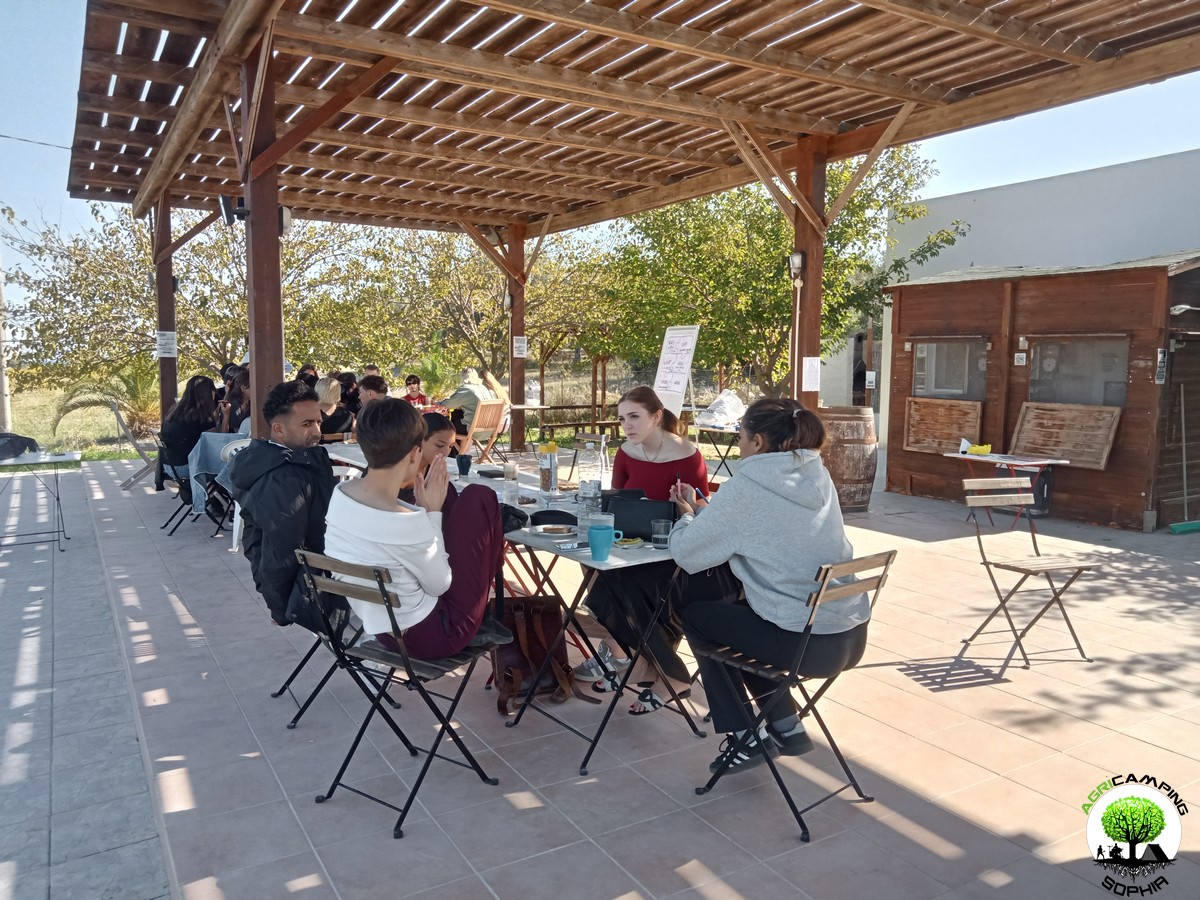 DO YOU WANT TO ORGANIZE AN ERASMUS AT AGRICAMPING SOPHIA?
DO YOU WANT TO ORGANIZE AN ERASMUS AT AGRICAMPING SOPHIA?
WHAT IS AGRICAMPING SOPHIA?
It is a campsite with tent pitches, glamping tents, mobile homes and bungalows
WHERE IS IT?
In Italy, in Sicily, near Syracuse, in Pachino: 36.736883, 15.095610
HOW TO CONTACT US?
info@agricampingsophia.it
(SPEAK ENGLISH) +39 3473079242 – (ONLY SPEAK ITALIAN) +39 3452396095
WHAT DO WE OFFER?
We offer hospitality and catering for Erasmus projects
FOR HOW MANY PEOPLE?
We can have 4-7 single beds in the Socrate Bungalow, 6-10 single beds in the Platone Mobile Homes, 4-6 single beds in the Aristotele Mobile Homes, 4 single beds in the Iblone Mobile Homes, 4 single beds in the single beds in the Empedocle Glamping Tents. In total we therefore have 18 comfortable single places or 31 single places with a fair spirit of adaptation.
IN WHICH PERIOD CAN AGRICAMPING SOPHIA BE AVAILABLE?
The most suitable periods to use our services...
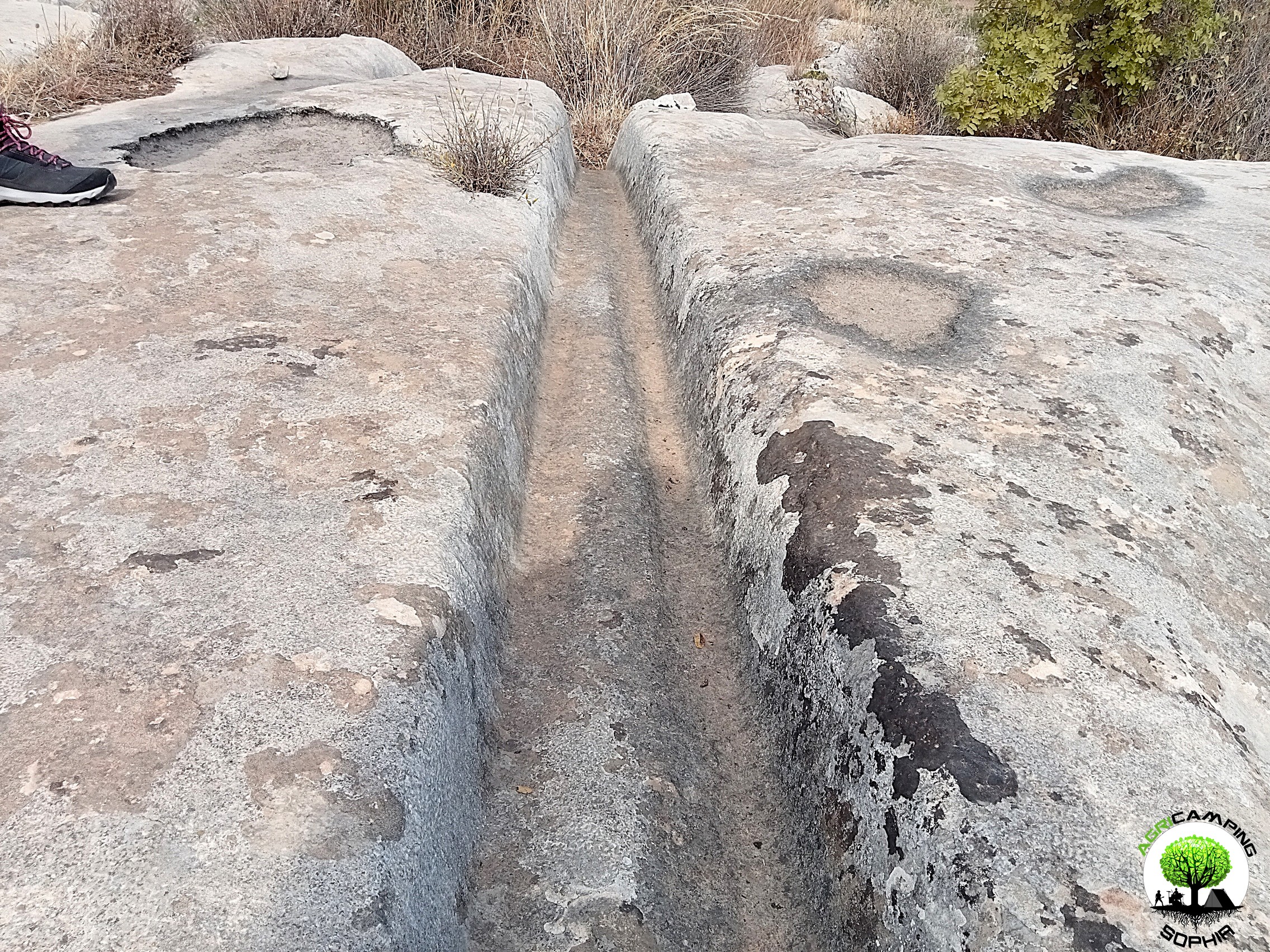 CART RUTS MODELED ON SOFT ROCK?
CART RUTS MODELED ON SOFT ROCK?
Read also RACK OR HOUSING FOR CLOGS?
Some cart ruts from the Targia district, in Syracuse, and most of the cart ruts from Granatari Vecchi, in Rosolini, give the impression of having been impressed, modelled, on a rock that was originally viscous, not entirely solid. As absurd as this hypothesis may seem, especially in Granatari Vecchi, the softness of the shapes and the at least anomalous uniformity of the rock bank, as if it were a concrete casting, which hosts the cart ruts, is unicum compared to the lithic context in the area.
In Targia this phenomenon is less impressive but if we consider the cart ruts essentially cart tracks, therefore furrowed roads indirectly resulting from the repeated passage of carts along the same route, we do not understand why such uniformity and smoothness is present, in the majority of cases, also on the parts not affected by the passage of the...
 RACK OR HOUSING FOR CLOGS?
RACK OR HOUSING FOR CLOGS?
Read also CART RUTS CUT FROM QUARRIES
In the presence of slopes, even slight ones, in some cart ruts in the Targia district, in Syracuse, central holes are found with a diameter of between 30 and 50 centimeters and a depth of 15-20 centimeters, spaced about 50 centimeters apart. Neither the position (they are not exactly in the center of the cart ruts and perfectly aligned with each other), nor the shape appear perfectly regular: either the passage of time and any wear have profoundly modified their original shape or, simply, they have never had a systematic regularity. However, the offset in position between one hole and another is never completely “off-axis”: there is always a portion about twenty centimeters wide that coincides with the same portion of the previous and subsequent hole. The best preserved and most defined holes are found in the cart ruts usually called Scala...
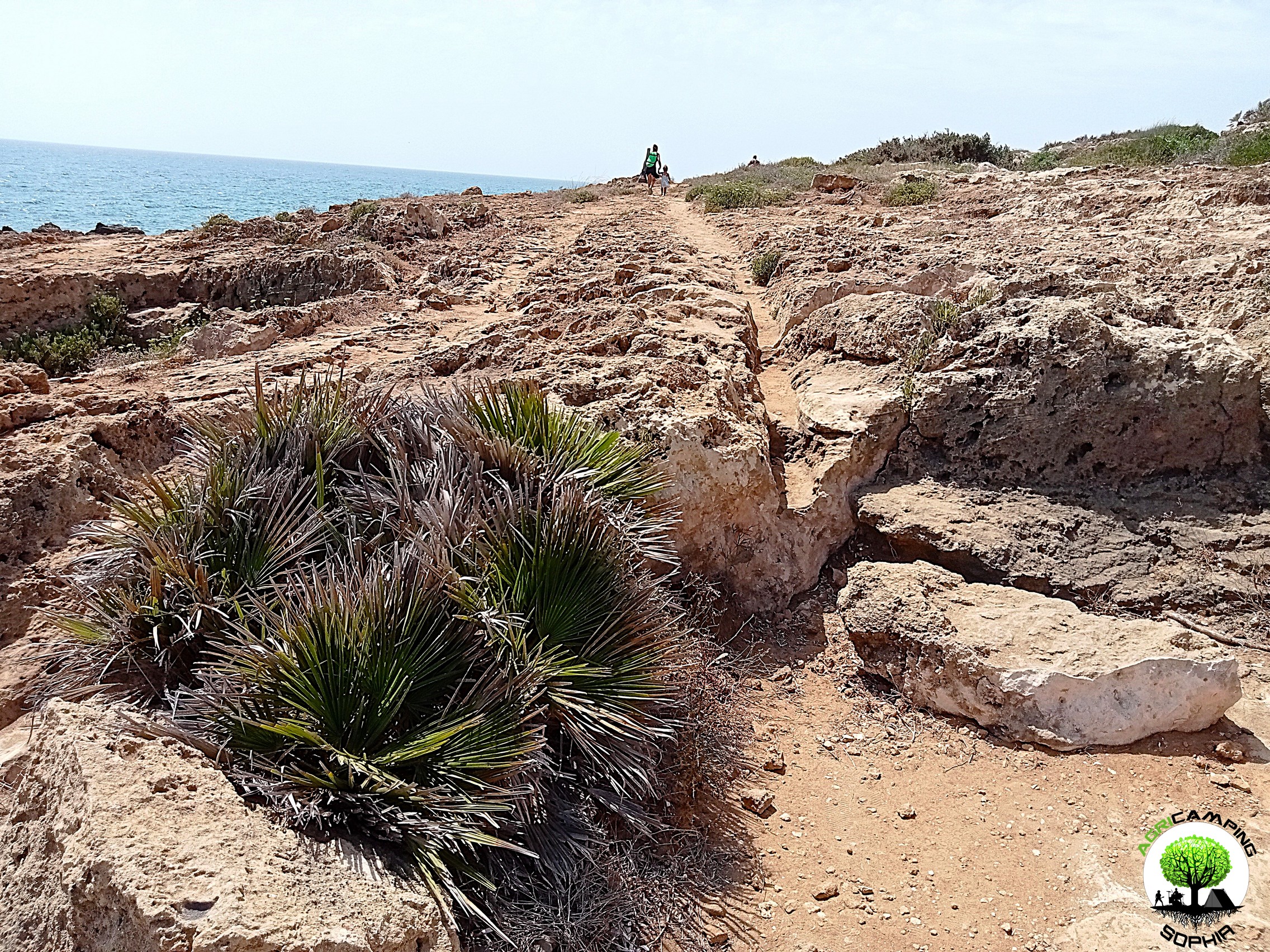 CART RUTS CUT FROM QUARRIES
CART RUTS CUT FROM QUARRIES
Back to CART RUTS AND A FEW TOO MANY PROJECTIONS
I will skip any preamble, referring to what has already been written regarding the presence of cart ruts in south-eastern Sicily.
The easy academic tendency has been, in most cases concerning cart ruts, to consider them in terms of the latomie, or quarries, with which very often (for example in the cases of the Targia or Pizzuta districts) they share the same territory.
According to this theory, the carraie would have been indirectly created due to the wear of the rock at each passage of carts or sleds loaded with extracted stone blocks. I will not repeat the arguments presented so far in order to demonstrate that this is a theory that has little solid foundations on an in-depth analysis of the cart ruts. However, I will add a piece by demonstrating the implausibility of a connection between them in both chronological and functional...
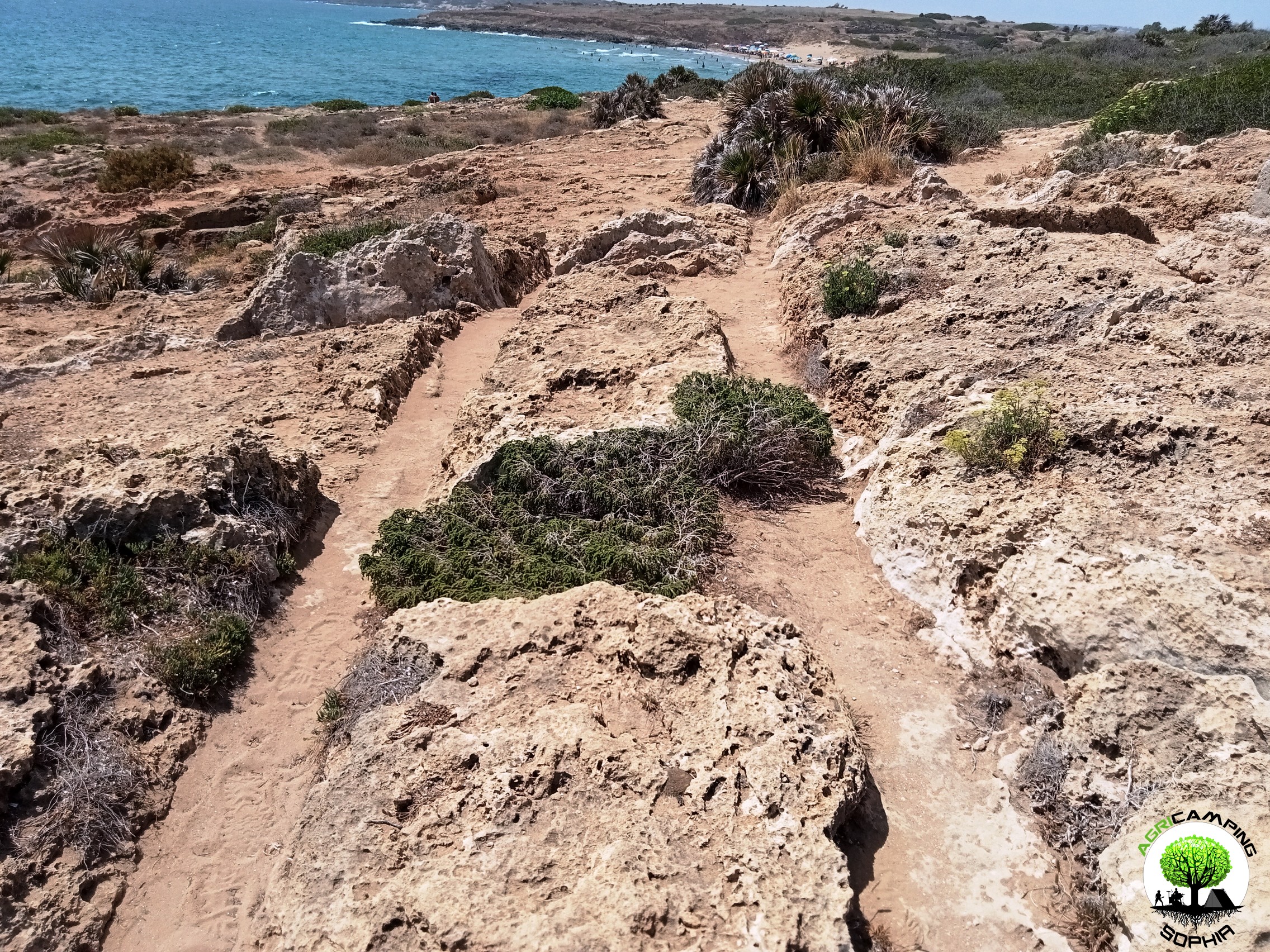 CART RUTS AND A FEW TOO MANY PROJECTIONS
CART RUTS AND A FEW TOO MANY PROJECTIONS
Read also THE POLISHING OF THE CART RUTS
I will skip any preamble, referring to to what has already been written regarding the presence of cart ruts in south-eastern Sicily.Considering the possibility that the cart ruts were gradually dug by the passage of carts pulled by pack animals, for example pairs of oxen, observing certain sections of the cart ruts present in the Granatari Vecchi district, in Rosolini, and in the Pizzuta district, close to the Vendicari Reserve, two questions arise:
1. Why force the animals to pass over rough surfaces and protrusions high, compared to the base of the furrows, even 60-70 centimeters?
2. Why, in the presence of such obstacles, not opt for a detour?
For Mottershead, Pearson and Schaefer such protrusions appeared later, since at the time of the passage of the wagons, a layer of earth covered the rocky bank, thus not making the obstacle...
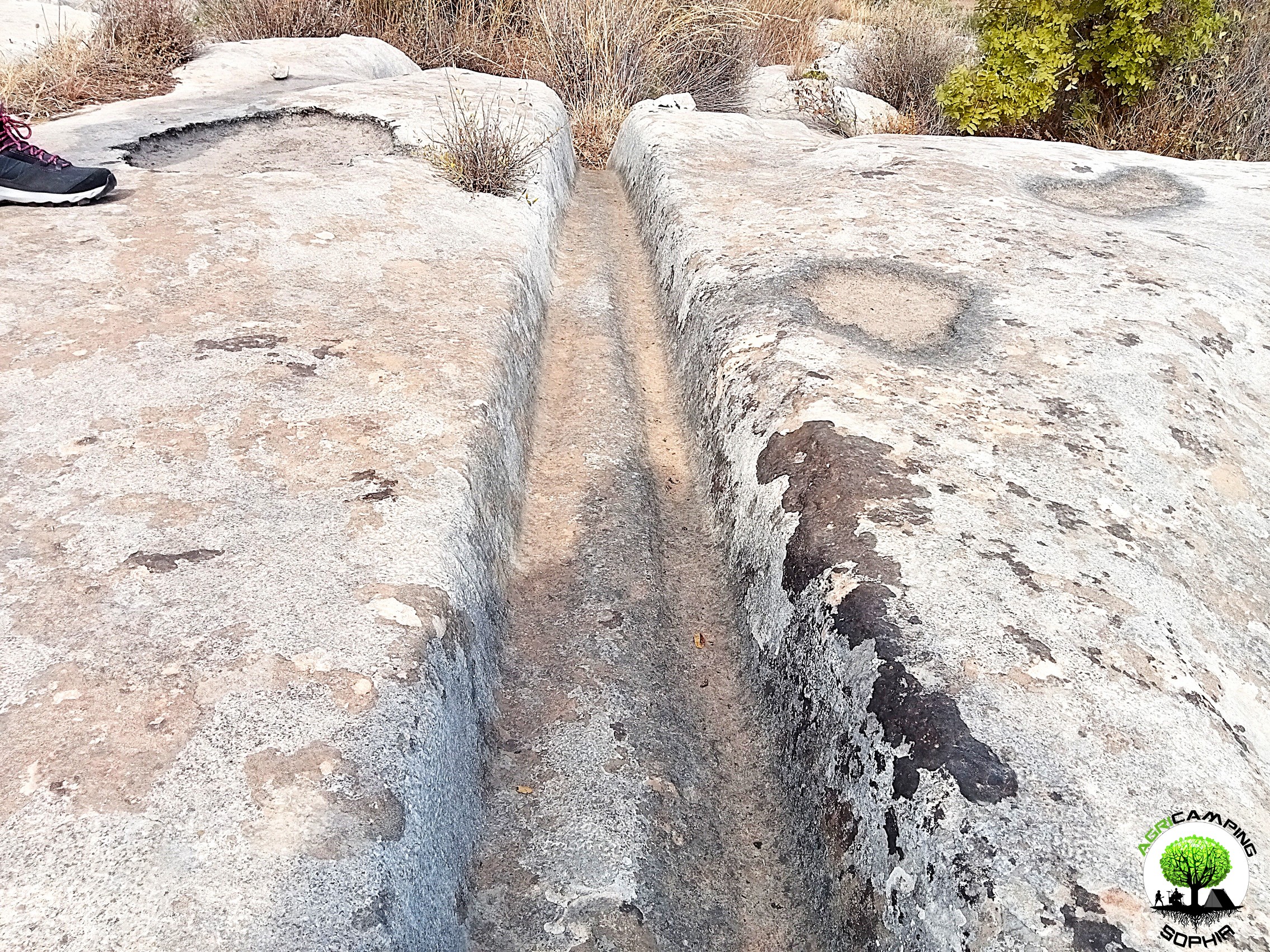 THE POLISHING OF THE CART RUTS
THE POLISHING OF THE CART RUTS
Read also THE PROBLEMATIC EDGES OF THE CART RUTS
I will skip any preamble, referring to to what has already been written regarding the presence of cart ruts in south-eastern Sicily.
To proceed with this comparison I have chosen a probable capital and the corner of a recess present in a block of the northern walls of Eloro that would seem to resemble a pinax, that is, a niche that would have housed a fresco of the heroa, but which a more careful observation refers to a system functional to the grip of the block through a pincer winch. Both elements, like the curt ruts, have remained at the mercy of the elements for millennia, and are therefore subject to comparable wear and tear due to the passage of time. The finishing of the capital should be of a high standard, since it is an architectural element that also has an aesthetic function. The recess, on the other hand, should have...
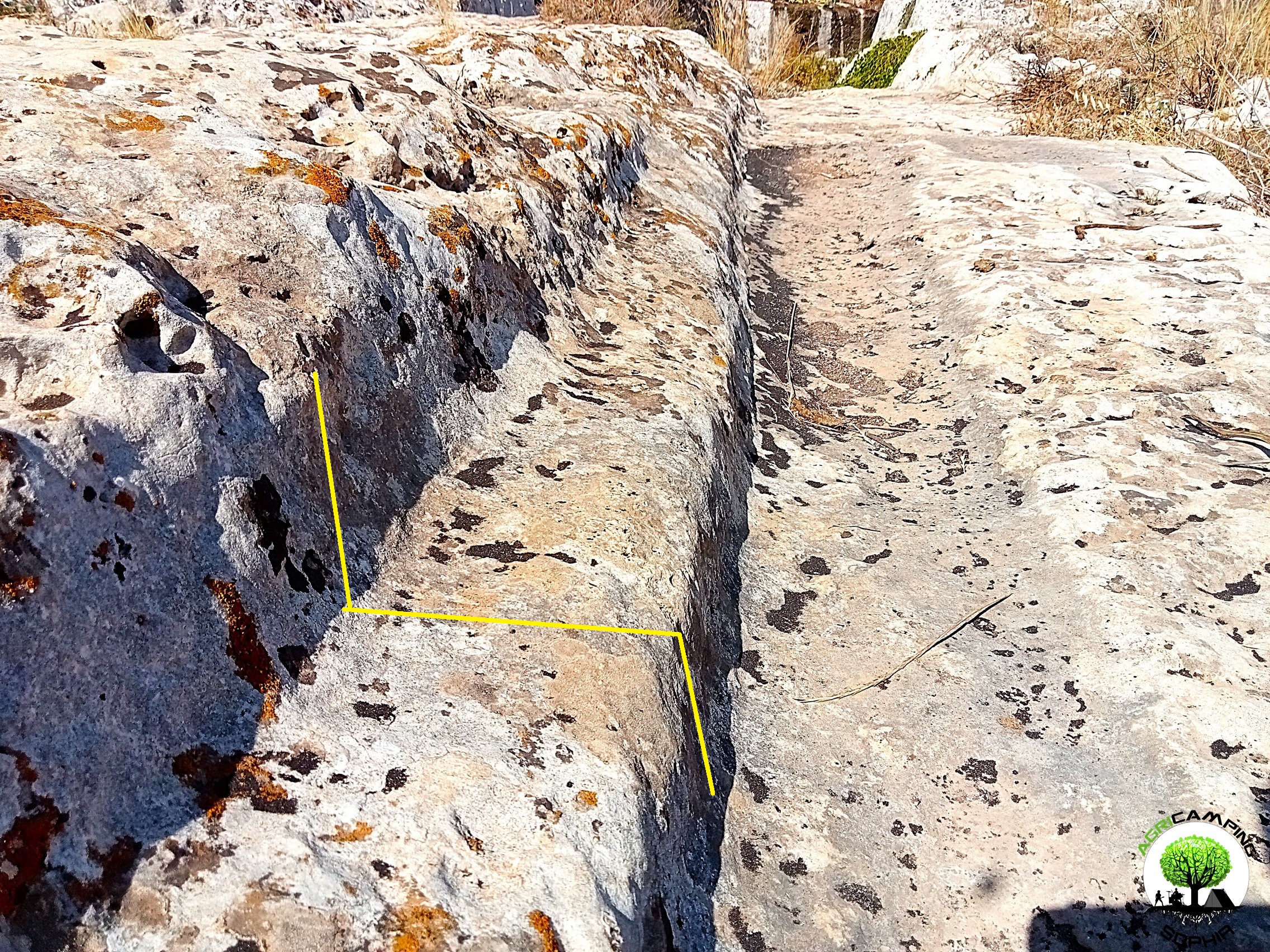 THE PROBLEMATIC EDGES OF THE CART RUTS
THE PROBLEMATIC EDGES OF THE CART RUTS
I will skip any preamble, referring to to what has already been written regarding the presence of cart ruts in south-eastern Sicily.As can be seen in other sites around the world, in some cart ruts I visited, in particular in the Cugni district in Pachino, in the Granati Vecchi district in Rosolini and in the Targia district in Syracuse, a clear border can be seen, a sort of frame, next to the grooves, more marked externally, barely noticeable internally.
The borders I measured have a width of 14-20 centimeters and a height of 8-10 centimeters.
Not all cart ruts have such frames present or particularly evident, regardless of the degree of wear or degradation. They are found above all in cart ruts with less deep grooves.
As already described in detail, given the presence of furrows with a depth of even 65-70 centimeters, the wheels of a possible vehicle would have had to have a...
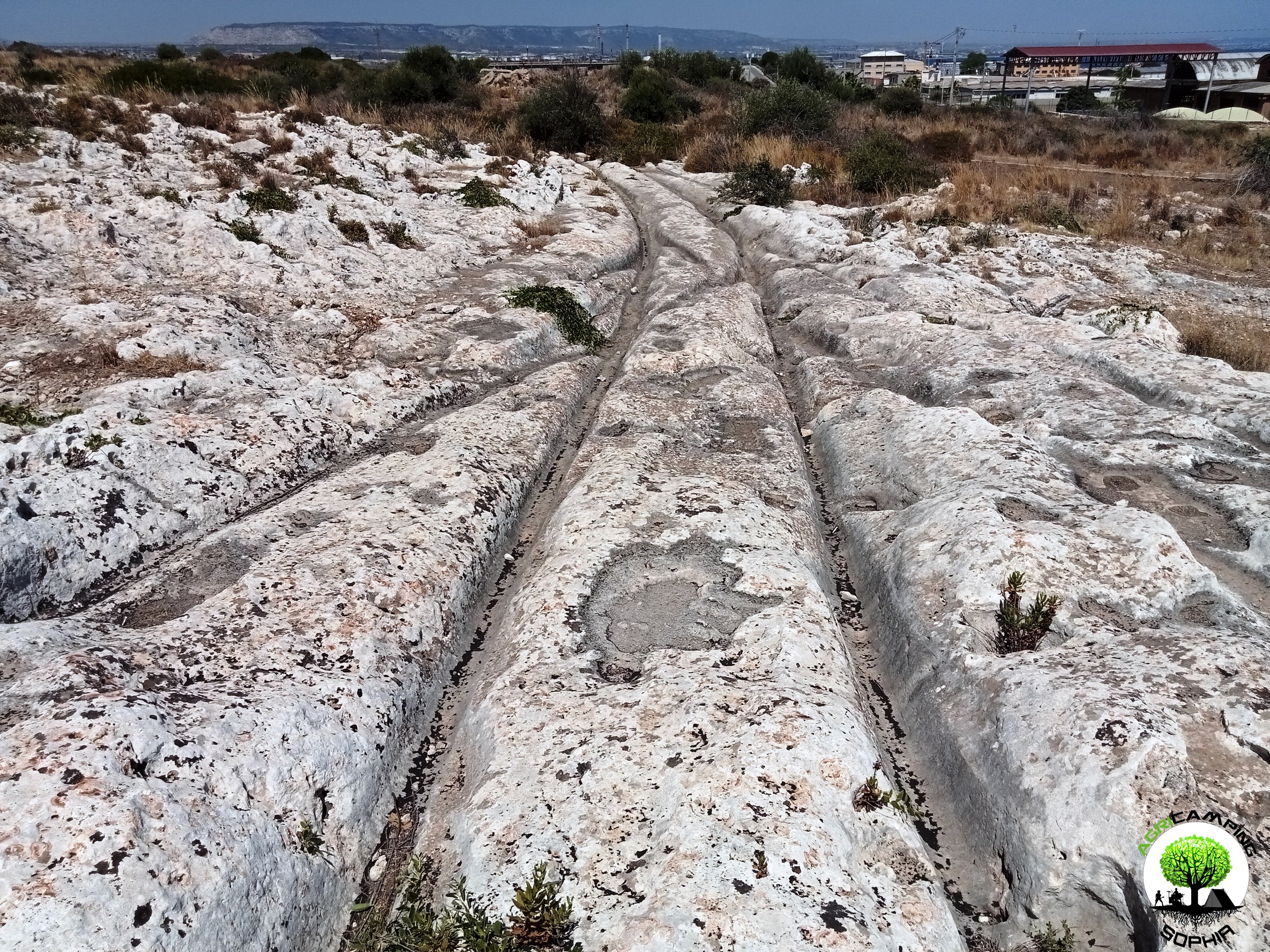 THE PROBLEM OF CART RUTS IN SOUTH-EASTERN SICILY (PART FOUR)
THE PROBLEM OF CART RUTS IN SOUTH-EASTERN SICILY (PART FOUR)
Click here to return to third part
Clapham Junction
As in the Maltese site Misrah Ghar Il-Kbir, also in the Targia and Granatari Vecchi districts the cart ruts intersect and cross each other in a similar way to the track switches in a railway station. The nickname Clapham Junction that was given by David H. Trump to the Maltese site, derives precisely from the similarity with the famous English railway station. For Sagona these are agricultural furrows and water channels, for Mottershead, Pearson and Schaefer these are abandoned paths due to obstacles and wear. Obviously we do not know what the morphology of the Syracuse and Rosolini territory was at times when the cart ruts were traced, but considering the current context, there certainly would have been no agricultural reason to build them, given the presence of fertile land, springs and fresh water courses just a few kilometers...






 DO YOU WANT TO ORGANIZE AN ERASMUS AT AGRICAMPING SOPHIA?
DO YOU WANT TO ORGANIZE AN ERASMUS AT AGRICAMPING SOPHIA? CART RUTS MODELED ON SOFT ROCK?
CART RUTS MODELED ON SOFT ROCK? RACK OR HOUSING FOR CLOGS?
RACK OR HOUSING FOR CLOGS? CART RUTS CUT FROM QUARRIES
CART RUTS CUT FROM QUARRIES CART RUTS AND A FEW TOO MANY PROJECTIONS
CART RUTS AND A FEW TOO MANY PROJECTIONS THE POLISHING OF THE CART RUTS
THE POLISHING OF THE CART RUTS THE PROBLEMATIC EDGES OF THE CART RUTS
THE PROBLEMATIC EDGES OF THE CART RUTS THE PROBLEM OF CART RUTS IN SOUTH-EASTERN SICILY (PART FOUR)
THE PROBLEM OF CART RUTS IN SOUTH-EASTERN SICILY (PART FOUR)